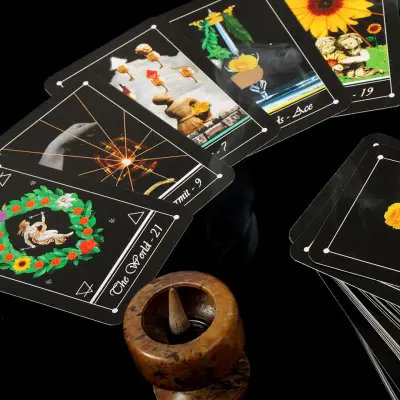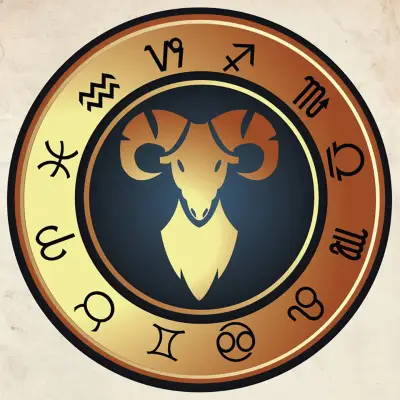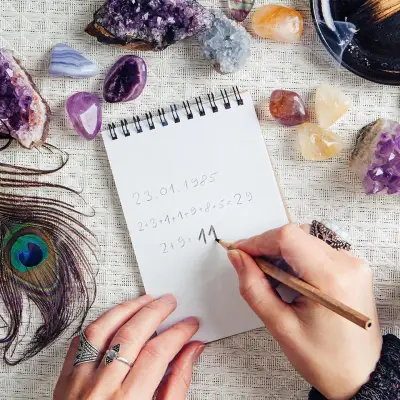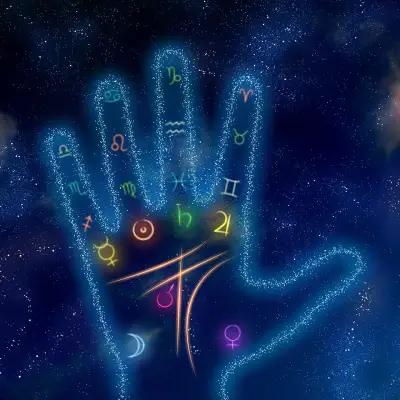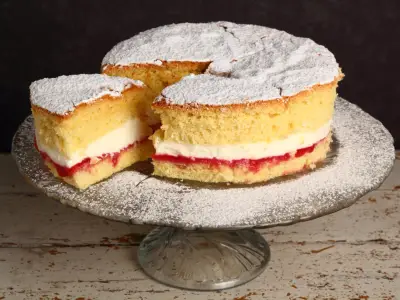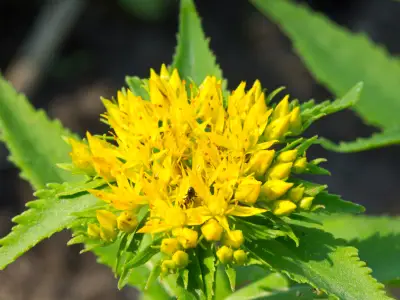Imagine sitting in a cosy corner with a cup of your favourite tea. As you sip the warm liquid, you start to notice intriguing shapes and patterns in the tea leaves settled at the bottom of your cup. You might wonder, "What do these tea leaves mean?" Well, you're about to begin a fascinating journey into the world of tasseography, the art of reading tea leaves.
In this guide, we'll walk you through the enchanting practice of interpreting tea leaves, from brewing the perfect cup of tea to identifying common tasseography symbols:
Jump to:
What Is Tasseography?
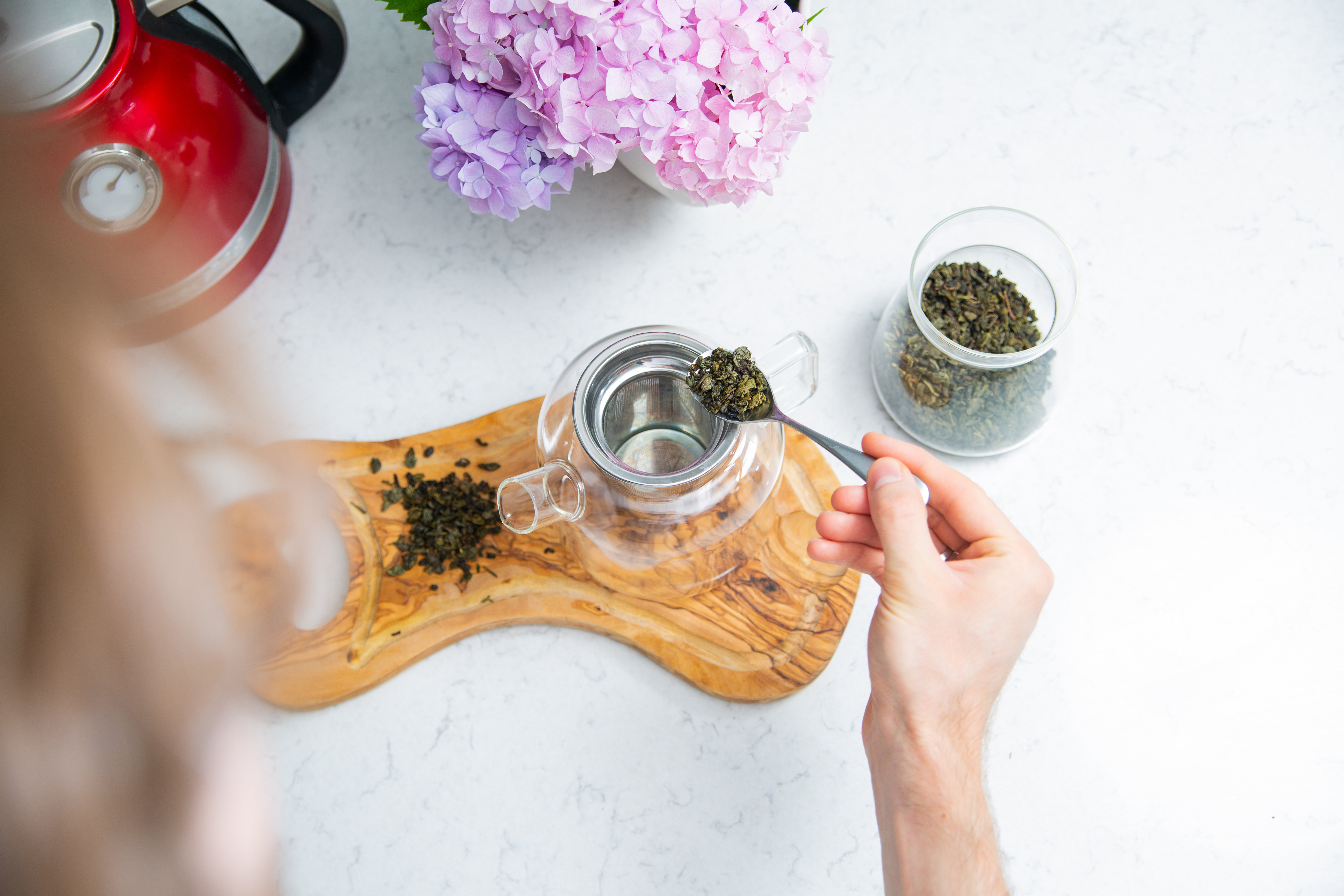
Tasseography, also known as tasseomancy, is the ancient practice of divination or fortune-telling by interpreting patterns and symbols formed by tea leaves in a cup. It's a unique way to tap into your intuition and gain insights into your life's journey.
This ancient art of divination and fortune-telling follows the intricate interpretation of patterns and symbols formed by the scattering of tea leaves within a cup. It offers a captivating opportunity to delve into the recesses of your intuition, providing insights into your life's journey.
Preparing Your Tasseography Cup
To get started, you'll need a special tasseography cup with symbolic images and patterns inside. These cups are designed specifically for tea leaf reading. If you don't have one, don't worry; you can still practice using a regular teacup. However, a tasseography cup enhances the experience.
Brewing the Perfect Cup of Tea
Before you can read the tea leaves, you need to brew a strong cup of loose-leaf tea. Use your favourite blend, but make sure it's loose leaves rather than tea bags. The process of brewing the tea itself can be a calming and meditative experience.
Reading Tea Leaves - a 5-Step Guide
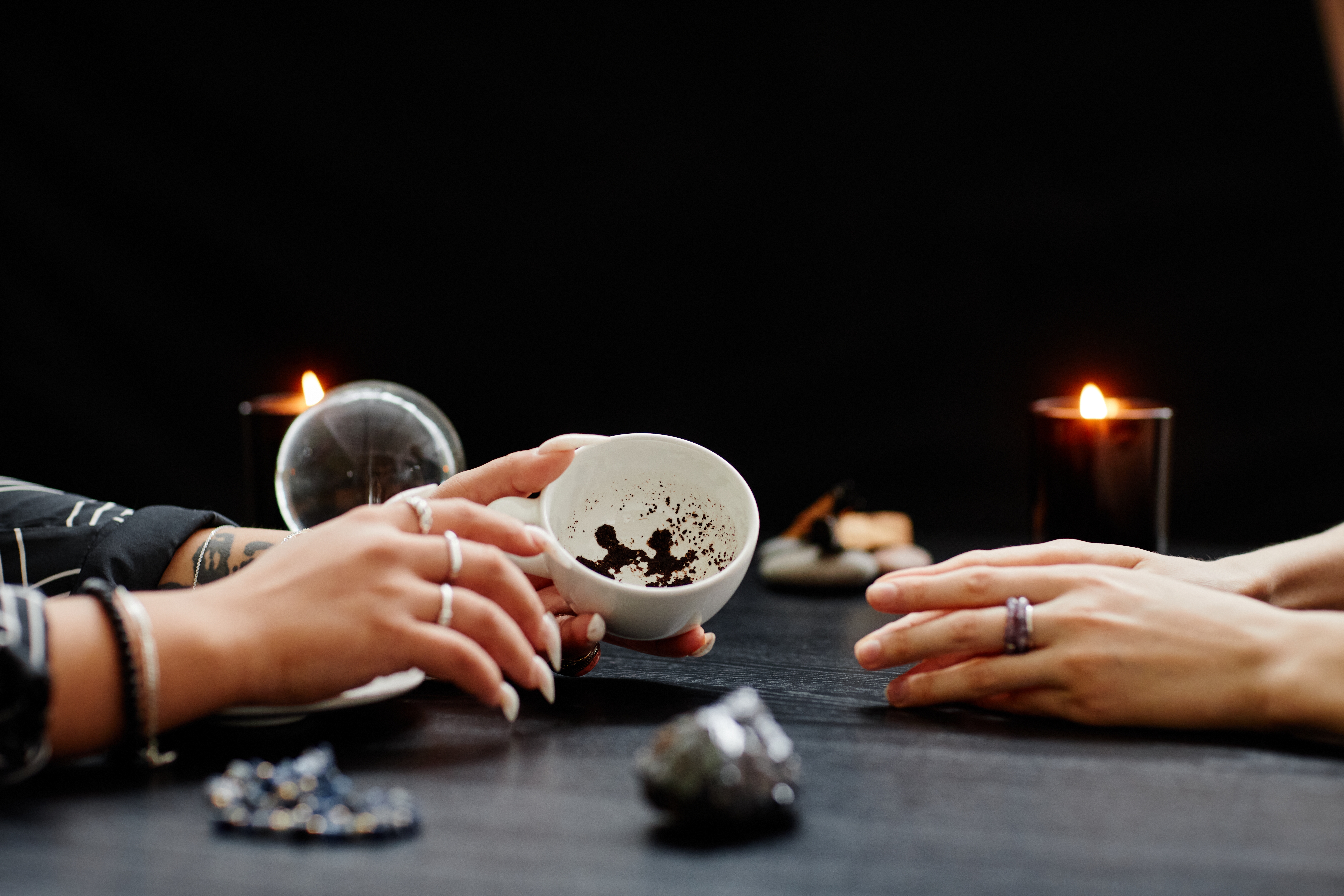
Now comes the exciting part – reading the tea leaves! Here's a five-step guide to help you unlock the mysteries within your teacup:
Step 1: Focus Your Intention
As you sip your tea, it's essential to prepare for your reading. Concentrate on a specific question or area of your life that you'd like insights into. This intention-setting process is essential as it aligns your subconscious with the symbols that will emerge. Whether it's about love, career, or personal growth, your intention guides the reading.
Step 2: Leave a Small Amount of Tea
Once you've enjoyed your tea, leave a small amount of liquid at the bottom of the cup. This remaining tea will serve as the canvas for your symbols to form. Gently swirl the cup to ensure the tea leaves disperse evenly across the interior.
Step 3: Invert the Cup
With the remaining tea leaves settled, it's time to prepare for the reading. Carefully place the cup upside down onto a saucer, allowing any remaining liquid to drain away. This symbolic act represents a shift in perspective, moving from the physical world into intuition and symbolism. Turn the cup around and hold it for a moment, infusing it with your energy and intention as you prepare to explore its secrets.
Step 4: Examine the Leaves
Now that the cup is right-side up, it's time to closely examine the tea leaves. Pay close attention to every detail. What shapes, patterns, and symbols do you see? The arrangement of tea leaves is unique to your reading, much like a fingerprint. Some leaves may form clear symbols, while others might create intricate patterns. Take your time and immerse yourself in the visual landscape that has emerged.
Step 5: Interpret the Symbols
Interpreting tea leaf symbols is a deeply personal and intuitive process. Unlike some divination methods, there's no strict dictionary for tea leaf symbols. This is where your intuition takes centre stage. Trust your instincts and let your mind make connections. For example, if you spot a heart shape, it could symbolise matters of the heart, such as love or emotions. A circle might signify unity, completeness, or a harmonious cycle. Don't limit yourself to predefined meanings; let your imagination flow as you explore the unique story told by your tea leaves.
Common Tasseography Symbols and Their Meanings
While interpretation is deeply personal and intuitive, here are 20 common tea leaf symbols and their meanings to help you begin your journey:
- Heart: The heart symbolises love and affection in its various forms. This may signify romantic love, deep emotional connections, or a reminder to nurture your relationships.
- Snake: The presence of a snake suggests transformation and change in your life. It may indicate shedding old habits, embracing a new path, or experiencing a significant personal evolution.
- Key: A key symbolises opportunities and solutions. This may represent unlocking new doors of opportunity, finding solutions to challenges, or gaining access to hidden knowledge.
- Tree: The image of a tree signifies growth and health. It can symbolise personal growth, well-being, and a strong foundation for future endeavours.
- Ship: A ship in your teacup represents a journey or adventure. This could be a physical voyage, a new life phase, or an exciting opportunity on the horizon.
- Cross: The presence of a cross indicates a challenge or decision that requires your attention. It may signify a moral dilemma, a choice between two paths, or a need for guidance in a particular situation.
- Crescent Moon: The crescent moon represents change and transition, particularly in matters of emotion and intuition. It may suggest that your emotions are in flux or that you should trust your instincts.
- Bird: Birds symbolise freedom, spirituality, and communication. The specific type of bird may offer additional insights. For instance, a dove may represent peace and harmony.
- Clock: A clock symbolises the importance of timing in your life. It may suggest that a significant event or decision is approaching, and you should be mindful of the timing.
- Star: Stars symbolise hope, inspiration, and guidance. Seeing a star in your teacup may indicate that you're on the right path or that you have a bright future ahead.
- Ring: A ring signifies commitment, unity, and connections. It may represent an upcoming engagement, a deepening of a relationship, or a sense of unity within your family or community.
- Arrow: An arrow symbolises direction and purpose. It may suggest that you need to stay focused on your goals and follow your chosen path with determination.
- Anchor: An anchor represents stability and security. It may signify that you have a solid foundation in your life, or it could be a reminder to stay grounded during turbulent times.
- House: The image of a house signifies your home and family life. It may indicate a need for domestic harmony, changes in your living situation, or a focus on family matters.
- Cloud: Clouds symbolise uncertainty and confusion. Seeing a cloud in your teacup may suggest that you're currently facing a period of ambiguity or unclear thinking.
- Eye: An eye symbolises awareness and perception. It may indicate that you should pay closer attention to a situation or that you possess intuitive insights.
- Bouquet of Flowers: A bouquet of flowers represents beauty and happiness. It may suggest upcoming celebrations, joyous events, or a need to appreciate the beauty around you.
- Mountain: A mountain symbolises challenges and obstacles. It may indicate that you're facing a significant hurdle or that you need to persevere to reach your goals.
- Fish: Fish symbolise abundance and prosperity. Seeing a fish in your teacup may suggest financial gains, or it could represent the need to dive deeper into your emotions.
- Book: A book symbolises knowledge and learning. It may signify a desire for education, a need to explore new ideas, or the importance of gaining wisdom.
7 Tips for a Successful Reading

To ensure a successful tea leaf reading, consider the following tips:
1. Set the Right Atmosphere
Choose a quiet and comfortable space free from distractions. Dim the lights and create a soothing ambience with soft music or candles.
2. Select Quality Tea
Opt for loose-leaf tea of high quality. The process of brewing loose tea leaves can be a calming and sensory experience, enhancing the overall ritual.
3. Focus Your Intention
Before sipping your tea, concentrate on a specific question or area of your life you'd like insights into. This intention-setting process aligns your subconscious with the symbols that will emerge.
4. Maintain Patience
During the reading, take your time examining the leaves and interpreting the symbols. Avoid rushing the process, as insights may come gradually.
5. Trust Your Intuition
Remember that Tasseography is a highly intuitive practice. Trust your instincts when interpreting symbols; your inner wisdom often knows the answers.
6. Keep a Journal
Maintain a journal to record your tea leaf readings. This helps track patterns, symbols, and their interpretations over time, enabling you to refine your skills.
7. Practice Regularly
Like any skill, Tasseography improves with practice. Regularly engage in tea leaf readings to hone your abilities and deepen your connection with the art.
Benefits of Tasseography

In addition to its role in fortune-telling, Tasseography offers a multitude of benefits that extend beyond the mystical. By engaging with tea leaves and their symbolism, you can:
- Enhance Intuition: Tasseography encourages you to trust your intuition and sharpen your instincts. It prompts you to rely on your inner wisdom to interpret the symbols, strengthening your intuitive abilities.
- Promote Relaxation and Stress Relief: The act of brewing tea, sipping it slowly, and engaging in a tea leaf reading ritual can be remarkably calming and meditative. It provides an opportunity to step away from the hustle and bustle of daily life and find moments of serenity.
- Self-Discovery and Self-Reflection: Tea leaf readings often touch on personal aspects of your life. This prompts you to reflect on your emotions, goals, and challenges. It's a form of self-discovery that can lead to greater self-awareness and personal insights.
- Creative Thinking: Interpreting tea leaf symbols requires creative thinking and an open mind. It encourages you to think outside the box, make unique connections, and tap into your imaginative faculties.
- Enhanced Communication: Tasseography can be a wonderful tool for interpersonal communication. Sharing a tea leaf reading experience with friends or loved ones can foster deeper connections and meaningful conversations.
Famous Tasseographers
Throughout history, several notable icons have practiced and contributed to the popularity of Tasseography. Here are a few famous tasseographers:
Madame d'Adelswärd-Fersen
A prominent figure in the early 20th century, Madame d'Adelswärd-Fersen was known for her tea leaf readings and published works on the subject. She played a significant role in popularising Tasseography during her time.
Sandra Amrita McLanahan
An accomplished Tasseographer and author, Sandra Amrita McLanahan has written books on the subject and conducted workshops to teach others the art of tea leaf reading. Her contributions have helped keep the practice alive and accessible.
Gypsy Rose Lee
The famous American burlesque entertainer, Gypsy Rose Lee, was also a skilled Tasseographer. She often surprised her audience with impromptu tea leaf readings during her performances, adding an element of mystique to her shows.
Recommended for you!
Best SellersCommon Misconceptions of Tasseography
Tasseography, like many mystical practices, often comes with misconceptions that can deter people from exploring its intriguing world. Here are some common misconceptions associated with Tasseography, along with clarifications:
Misconception 1: Tasseography is Strict and Rigid
Clarification: Tasseography is a highly intuitive practice, and there are no strict rules or rigid interpretations. It allows for creativity and personal symbolism. While there are common symbols, the meanings are open to interpretation, making it a flexible and personal experience.
Misconception 2: You Need a Special Cup
Clarification: While there are dedicated Tasseography cups with symbolic images and patterns inside, you can still practice using a regular teacup. The special cup enhances the experience but is not a requirement for meaningful readings.
Misconception 3: Tea Leaf Readings Predict the Future with Certainty
Clarification: Tea leaf readings provide insights and guidance, but they don't predict the future with absolute certainty. They offer perspectives and possibilities based on the symbols and patterns observed. The future is influenced by numerous factors, including personal choices and external events.
Misconception 4: Tasseography is Exclusive to Psychics
Clarification: Tasseography can be practiced by anyone interested in the art of divination and symbolism. While some psychics may incorporate it into their services, it's not exclusive to them. Anyone can learn and enjoy the practice.
Master the Art of Tasseography with Centre of Excellence
Uncover the mysteries hidden within tea leaves through our Introduction to Tasseography Diploma Course.
What Awaits You
- Discover Tasseography: Immerse yourself in the fascinating world of Tasseography. Gain insights into its historical significance and learn how this ancient practice can illuminate your life's path.
- Personal Growth and Self-Understanding: Tasseography offers a unique opportunity for self-awareness and personal insights. Explore the symbolism hidden within the leaves and unveil their connection to your personal growth and life journey.
- Unveil Tea Leaf Secrets: Understand the symbols, patterns, and messages that emerge from your teacup and harness this ancient wisdom for personal guidance and enlightenment.
Special Opportunity
For a limited time, we’re excited to offer our Introduction to Tasseography Diploma Course for the exclusive price of just £29. This exceptional offer grants you savings of over £100, making it an accessible and transformative opportunity.

